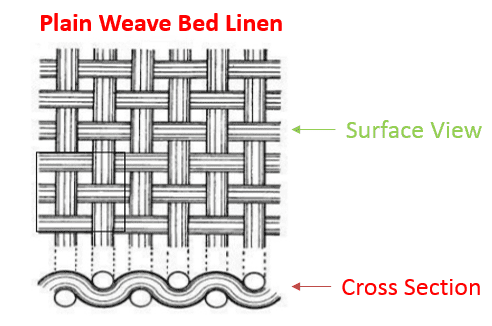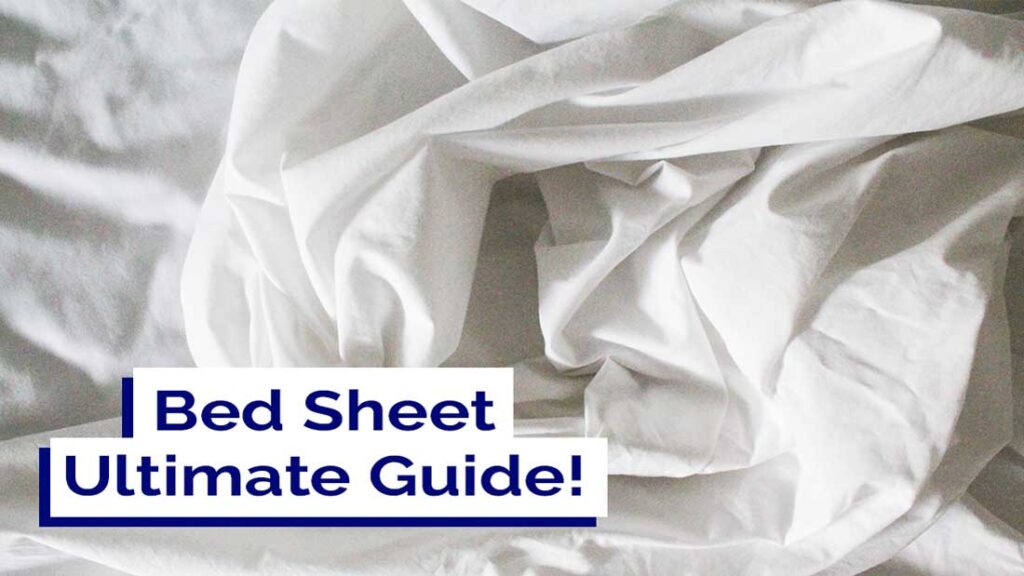Dobby fabric is a woven textile characterized by small geometric patterns. It is commonly used in the production of dress shirts and other garments, as well as home textiles such as curtains and bedding.
The unique weaving technique of dobby fabric creates a raised texture and adds visual interest to the fabric. Dobby fabric is known for its durability, breathability, and wrinkle resistance, making it a popular choice for both fashion and home decor applications.
With its versatility and distinctive design, dobby fabric continues to be a staple in the textile industry. Whether you’re dressing up or decorating your home, dobby fabric offers a stylish and functional option for your textile needs.

Credit: dineshexports.com
Table of Contents
The History Of Dobby Fabric
The origins of dobby weaving can be traced back to ancient civilizations, where intricate patterns and designs were woven into fabric through the use of manual looms. This weaving technique, named after the intricate designs it creates, has been practiced for centuries and has evolved over time.
Unlike other weaving techniques, dobby weaving employs a special type of loom that is equipped with a dobby mechanism. This mechanism allows for the creation of small, geometric patterns by selectively raising and lowering warp threads. These patterns, known as dobby designs, are what give dobby fabric its unique and captivating look.
Over the years, dobby weaving has undergone remarkable advancements, both in terms of technology and design. With the advent of power looms and computer-controlled dobby machines, the process of creating dobby fabric has become more efficient and precise.
| Time Period | Innovation in Dobby Technology |
|---|---|
| 18th Century | The introduction of dobby mechanisms in handlooms significantly increased the complexity of dobby designs. |
| 19th Century | The industrial revolution brought forth power looms, allowing for mass production of dobby fabrics. |
| 20th Century | The development of computerized dobby machines revolutionized the weaving process, enabling intricate and customizable designs with greater ease. |
| Present | Modern dobby looms combine the precision of computerized dobby machines with the efficiency of power looms, resulting in high-quality and visually stunning dobby fabrics available in a wide range of designs and colors. |
Today, dobby fabric is used in various applications such as clothing, upholstery, and home decor. Its versatility, combined with its rich history and intricate designs, continues to captivate designers and consumers alike.

Credit: www.visionlinens.com
Characteristics Of Dobby Fabric
Distinctive Patterns
Dobby fabric is known for its intricate patterns created using a special weaving technique.
Variety In Design
Dobby fabric offers a wide range of design options, including stripes, checks, and geometric shapes.
Types Of Dobby Weaves
Dobby fabric offers a unique texture and pattern due to its intricate weave structure. There are several types of dobby weaves that create distinct designs and textures in the fabric.
Bird’s Eye Dobby
Bird’s Eye dobby weave features small geometric patterns resembling tiny dots or circles scattered across the fabric.
Swiss Dot Dobby
Swiss Dot dobby weave has small raised dots woven into the fabric, creating a textured and playful design.
Honeycomb Dobby
Honeycomb dobby weave showcases a hexagonal pattern that resembles the natural structure of a honeycomb, adding depth and visual interest to the fabric.
“` By incorporating these different dobby weaves into your fabric choice, you can create unique and stylish garments that stand out.
Credit: sleepopolis.com
Applications Of Dobby Fabric
Dobby fabric is a versatile textile known for its unique woven patterns, such as dots, stripes, and geometric shapes. It finds applications in various industries, including home decor, clothing, and upholstery, adding texture and style to any project.
Dobby fabric is a versatile textile that finds its applications in various industries. Its unique weaving technique and intricate patterns make it highly desirable for a range of purposes. Let’s explore the different applications of dobby fabric.Fashion And Apparel
Dobby fabric is widely used in the fashion and apparel industry. Its lightweight and breathable properties make it an ideal choice for clothing items, especially during the warmer months. The intricate dobby weaves add visual interest to garments, making them stand out from the crowd. This fabric is commonly used in shirts, blouses, dresses, skirts, and even accessories like scarves and ties.Home Furnishing
Dobby fabric also plays a significant role in home furnishing. Its unique patterns and textures add a touch of elegance and sophistication to any interior space. From curtains and drapes to upholstery and cushion covers, dobby fabric can be found in various home decor items. Its durability and resistance to wear and tear make it a practical choice for frequent use in homes.Industrial Uses
Aside from fashion and home furnishing, dobby fabric also finds applications in various industrial settings. Its strength and durability make it suitable for industrial uses where a sturdy fabric is required. Dobby fabric is commonly used in manufacturing workwear, protective clothing, and heavy-duty bags. Its ability to withstand harsh conditions and frequent use makes it a reliable choice for industrial applications. In conclusion, dobby fabric is a versatile textile with a wide range of applications. Whether it’s in the fashion industry, home furnishing, or industrial settings, this fabric’s unique weaving technique and visual appeal make it a desirable choice. Its lightweight, breathable, and durable properties further enhance its usability, making it a popular option for different purposes.Production Of Dobby Fabric
Dobby fabric is distinctive for its unique weave pattern that creates intricate designs and textures. The production process of dobby fabric involves a specific weaving method and carefully selected materials to achieve its signature appearance and quality. Let’s delve into the detailed production process of dobby fabric to understand the craftsmanship behind this renowned textile.
Weaving Process
The weaving process of dobby fabric involves utilizing a special loom known as a dobby loom. Unlike traditional plain fabric weaves, the dobby loom allows for more complex patterns and designs to be woven into the fabric. This intricate weaving process results in the characteristic geometric patterns and textured motifs that set dobby fabric apart from other textiles.
Materials Used
High-quality yarns, including cotton, silk, wool, or blends of these materials, are commonly used in the production of dobby fabric. These yarns are carefully selected to ensure the fabric’s durability, softness, and ability to hold the intricate dobby weave patterns. Additionally, the use of vibrant and colorfast dyes enhances the visual appeal of the dobby fabric, contributing to its overall aesthetic charm.
Quality Standards For Dobby Fabric
Dobby fabric is a woven material that features small geometric patterns. It’s known for its unique texture and durability. The quality standards for dobby fabric ensure that it meets specific criteria, such as strength, colorfastness, and overall appearance, making it suitable for a wide range of applications.
Quality Standards for Dobby Fabric Dobby fabric is renowned for its unique patterns and textures, making it a popular choice in the textile industry. However, achieving high-quality dobby fabric requires adherence to specific standards to ensure superior end products. Understanding the quality standards for dobby fabric is essential in ensuring the production of premium textiles that meet customer expectations. Let’s delve into the factors and industry standards that influence the quality of dobby fabric. Factors Affecting Quality The quality of dobby fabric is influenced by various factors, including the type of yarn used, the weaving technique, and the finishing processes. Moreover, the thread count and dyeing methods play pivotal roles in determining the fabric’s overall quality. By meticulously controlling these elements, manufacturers can produce dobby fabric that boasts consistency, durability, and aesthetic appeal. Industry Standards In the textile industry, specific standards and guidelines have been established to maintain the quality of dobby fabric. These standards encompass parameters such as tensile strength, colorfastness, and dimensional stability. Adhering to these industry standards not only ensures the production of high-quality dobby fabric but also contributes to the overall reliability and safety of the end products. “`htmlFactors Affecting Quality
The quality of dobby fabric is influenced by various factors, including the type of yarn used, the weaving technique, and the finishing processes.
Moreover, the thread count and dyeing methods play pivotal roles in determining the fabric’s overall quality.
By meticulously controlling these elements, manufacturers can produce dobby fabric that boasts consistency, durability, and aesthetic appeal.
Industry Standards
In the textile industry, specific standards and guidelines have been established to maintain the quality of dobby fabric.
These standards encompass parameters such as tensile strength, colorfastness, and dimensional stability.
Adhering to these industry standards not only ensures the production of high-quality dobby fabric but also contributes to the overall reliability and safety of the end products.
Care And Maintenance Of Dobby Fabric
Dobby fabric is known for its unique weave that creates intricate patterns and textured designs. To keep your dobby fabric items looking their best, proper care and maintenance are essential.
Cleaning Tips
- Avoid harsh chemicals that can damage the fabric.
- Use mild detergent and cold water for washing.
- Hand wash or gentle cycle in the washing machine is recommended.
- Air dry dobby fabric items to prevent shrinking.
Preservation Techniques
- Store dobby fabric items in a cool, dry place away from direct sunlight.
- Avoid hanging dobby fabric items to prevent stretching.
- Use padded hangers for dresses and blouses to maintain their shape.
Frequently Asked Questions For What Is Dobby Fabric
Is Dobby Fabric For Summer Or Winter?
Dobby fabric is versatile and suitable for both summer and winter. Its lightweight and breathable texture makes it ideal for warmer months, while it can also be layered for colder seasons. With its unique weave, dobby fabric offers comfort and style throughout the year.
Is Dobby Fabric Good?
Yes, dobby fabric is good. It has a unique texture and pattern that adds depth and interest to garments and home decor items. It is also durable and easy to care for, making it a popular choice for a wide range of applications.
What Is The Difference Between Dobby And Jacquard?
Dobby looms weave simple geometric patterns, while Jacquard looms produce intricate designs with complex patterns.
Is Cotton Dobby 100% Cotton?
Yes, cotton dobby is made of 100% cotton material, known for its unique textured weave.
Conclusion
Dobby fabric offers a unique texture and pattern, making it a popular choice for fashion and home decor. Its versatility allows for endless design possibilities, making it suitable for both casual and formal settings. With its durable and breathable nature, dobby fabric is not just stylish but also functional.
Whether you’re designing clothing or furnishing your home, dobby fabric is sure to enhance your style and bring a touch of elegance to any space.
